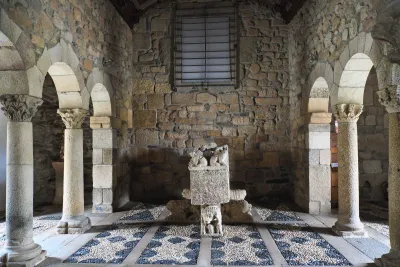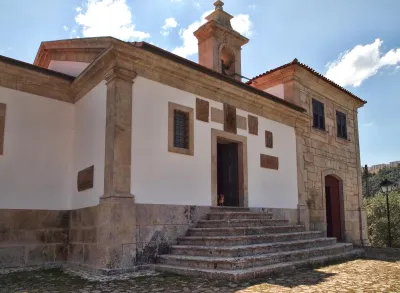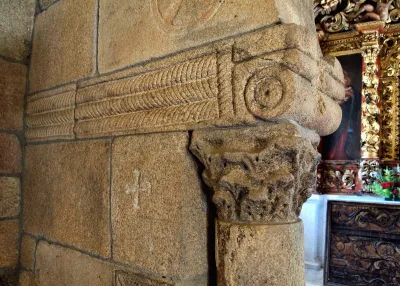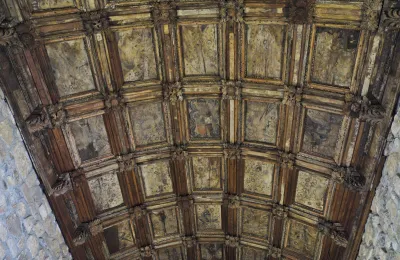
Tomb of Bishop of Porto GFreihalter CC BY-SA
Chapel of São Pedro de Balsemão paul Barker Hemings CC BY-SA
Capela de São Pedro de Balsemão paul Barker Hemings CC BY-SA
Capela de São Pedro de Balsemão GFreihalter CC BY-SACapela de São Pedro de Balsemão
Despite the relatively recent Baroque styling of the facade the Chapel of São Pedro de Balsemão is in fact one of the most ancient churches in Portugal. The site possibly dates back to the 7th century when it may have been used as a sanctuary by the Visigoths.
It is actually more likely the chapel started out in the 9th or 10th century as the reconquests gained traction. Whilst the The layout is believed to remain as it was, what we see today is very much a mixture of styles and influences from the intervening centuries.
A closer look at some of the stones, including those used to build the altar, reveal their origin. These were stones from the ruins of a nearby Roman villa, some of which carry the original inscriptions.
Among the more notable features are the ornate Corinthian pillars which hold up the arches dividing the apse. Centre stage though is the 14th century Gothic sarcophagus of the then Bishop of Porto, D. Afonso Pires.
At some point in the 17th century the chapel was annexed by the local landowner who restyled the chapel to fit in with his adjoining manor. Following this the chapel was also used as the family pantheon.
Lamego5100-013Phone
+351 254 600 230Link
http://www.culturanorte.pt/en/equity/chapel-of-san-pedro-of-balsemao/Attraction type

Lamego travel guide »
Nestled among the terraced slopes of the Douro valley port wine-growing region, and overlooked by an ornate shrine, the town of Lamego is elegant and infused with Baroque style. Atop one of its two hills stands the 13th century keep and a castle 100 years its senior. The Porta dos Figos gateway arch leads into the narrow streets of the inner town. Also found here is a somewhat unusual piece…